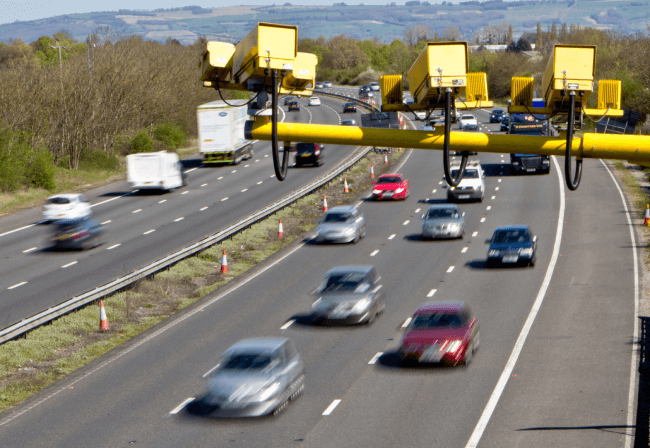Nottingham City Council's Smart Traffic Sensors: Over 200 Sensors to be Installed
Environment | 24-01-2023 | By Robin Mitchell
Nottingham City Council has recently announced plans to enhance its smart spaces and intelligent traffic management systems by installing 219 sensors throughout the city. These sensors will be used to improve traffic handling, monitor environmental conditions, and track how individual vehicles contribute to pollution.
As the push for smart cities and connected infrastructure continues, advanced technologies such as Automatic Number Plate Recognition (ANPR) and AI-powered image recognition have become more prevalent. However, with the integration of these technologies come certain dangers and risks to privacy and security, as well as the need for proper management and oversight by authorities such as the police.
These challenges present a need for careful consideration of the benefits and potential risks associated with the use of ANPR and other tracking technologies in smart spaces and traffic management networks. What challenges do current data gathering methods present, what will the city council be doing, and could the integration of automatic number plate recognition reduce individual privacy?
What challenges do current data-gathering methods present?
When it comes to traffic management, very few people recognise the immense difficulties associated with data collection, mapping, and organisation. The sheer number of roads and junctions, the journeys that people take, and the many random events that can occur on the road make traffic management an exceedingly complex problem to solve, so complex that it would take quantum computing systems to be able to even get close to fully optimising modern traffic networks.
However, calculating journey times and predicting road usage is more than just a computational challenge; it’s also a data problem. Not only do traffic controllers need to know how many cars are on the road at all times, but the individual journeys made by vehicles, the size of those vehicles, and the type of vehicle also play an important role. One method for gathering such data is to install pressure sensors into roads that detect passing vehicles, and while this can be used to count the number of cars that use a particular sensor, it reports nothing on the vehicle details, nor does it give insight into the journey that each car is making.
Another method for gathering such data is for traffic controllers to access private data held by companies such as Google, which routinely log journeys in great detail. However, access to such data is potentially illegal (due to the nature of data privacy) and likely to be something that will never be shared.
Finally, traffic cameras and automatic number plate recognition (ANPR) can be used for tracking individual vehicles on the road, and these are commonly found in average-speed camera zones. However, such cameras are widely spaced and only ever found on busy roads, which gives them limited tracking abilities.

Nottingham City Council to install 219 smart sensors for traffic management
Recognising the challenges faced with traffic management, Nottingham City Council recently announced that it will install approximately 219 smart sensors across the city to monitor traffic. The new sensors will be fitted with ANPR while also having the ability to adjust traffic controls, including lights and barriers. Installing the new network will be done between February and November, and it is expected that the sensors will be able to provide data, including speeds, vehicle counts, and journey times between nodes for specific vehicles.
It is hoped that by installing the sensors, the city will be able to not only identify sources of congestion but also determine how pollution affects specific areas and what vehicles are contributing to this pollution. For example, suppose one residential area is identified as having above levels of pollution due to its proximity to an industrial estate (where large vehicles are commonly found). In that case, the sensor network will be able to provide ample evidence of this connection, and thus, traffic management systems could redirect certain vehicle types.
At the same time, the sensors may also provide valuable insight into junction use and potential safety issues they face. For example, a junction where drivers do not respect give way or stop signs could be detected by a smart traffic sensor, and this data could then be used to explore why this is the case (such as a missing or damaged sign).
Could the integration of such technologies invade privacy?
While improving road networks helps drivers reach their destination faster, there are some genuine concerns for privacy when technologies such as ANPR are used. The use of ANPR for controlling average speeds over motorways is an excellent method for improving safety during dangerous conditions, but its use across an entire city allows authorities to start tracking individual car owners.
Considering that authorities also have access to DVLA records, it is more than possible to identify a car owner, build up tracking data on their journeys, and then present the findings to that individual for the purpose of blackmail. This data can also be used to determine when that individual has left their home, providing the perfect opportunity to either burgle the property or, worse, plant evidence for illicit prosecution.
Now, it may sound like a bit of a stretch to accuse local authorities of such conspiracies, but the fact that these technologies are networked makes it possible for a hacker to do precisely these things. In fact, a hacker wouldn’t even need access to DVLA databases to threaten an individual, just as long as they get a number plate of a car parked at a property of interest.
Overall, smart spaces and active traffic monitoring systems will become inevitable as technology continues to improve. Still, those developing such solutions need to ask themselves how they can put measures in place that prevent devices from being used for illicit purposes, as well as ensure that private data is protected.

